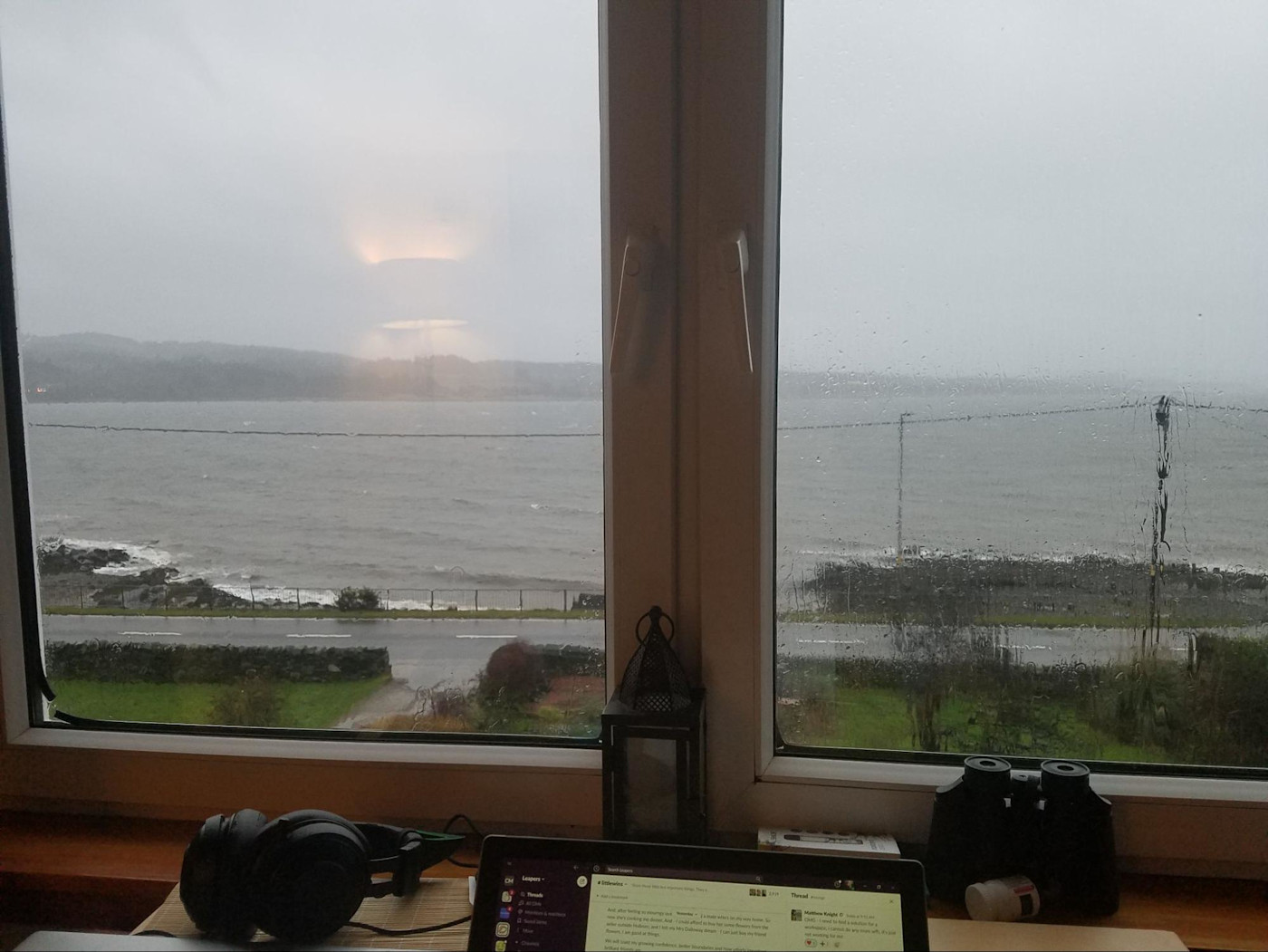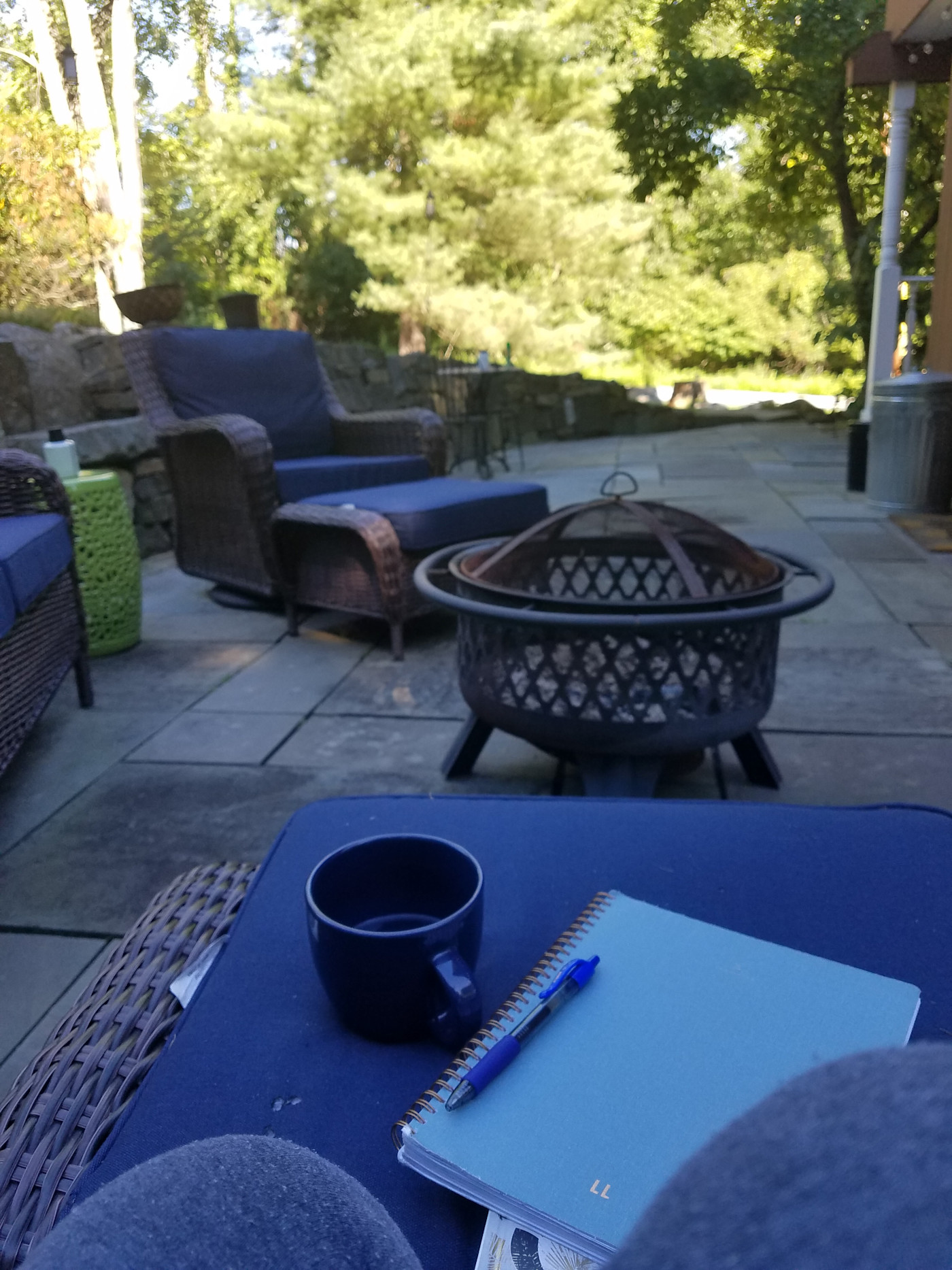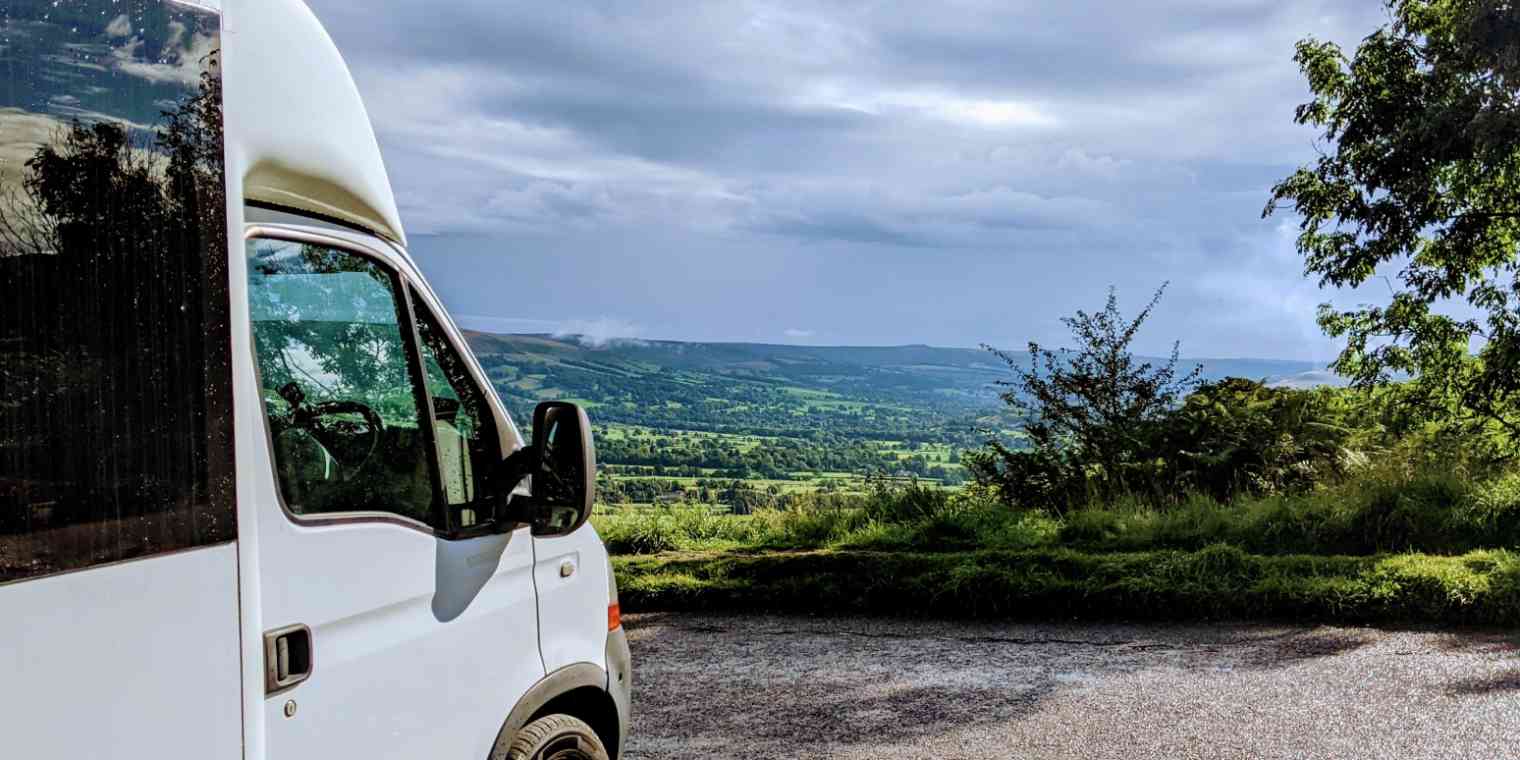Last December, my husband and I decided to go nomad. Since then, we've moved over a dozen times across villages, cities, and countries, and I've had to set up a new home office every single time. Here's how I've adapted to the digital nomad lifestyle—and how you can, too.
1. Know your work routine
Becoming a digital nomad and setting up a nomadic home office starts with understanding how you work best. Try asking yourself the following questions:
When do I need to work? Do you have a set schedule with specific hours and time zone-specific meetings, or are you a bit more flexible? I tend to get most of my work done in the morning and evening, so I like workspaces I can easily pack away and come back to.
What do I need to work? Think about the tools, software, and hardware you need to have on hand to get the job done. Mine are my laptop, planner, earbuds for work calls, a comfy seat, and pens. Lots of pens. My husband is all about his heavy desktop and multiple monitors.
How do I work best? Some people prefer to keep their work and personal lives completely separate, while others flow between the two. I tend to take long breaks in the middle of the day, but sometimes have to hop back to my desk to answer emails or take calls. Include your ideal work environment as well. Are you open to sharing space or do you need silence and your own room?
These should start to help you plan out a remote workspace for yourself that you can recreate wherever you are, whether that's a downtown coworking space or your Airbnb dining table. You might find you can get a lot done with just your smartphone and access to email or realize you need a dedicated space with its own door to be productive.

2. Have a travel plan
Creating a workspace while you're stationary is one thing, but many of us nomads need to get stuff done while we're traveling from A to B. If that's the case for you, answering the questions above can also help you get a sense of where to start.
Think about how you generally travel and what that might mean for your work schedule. Do you tend to hop all over the place, or are you more of a slowmad? Do you cross continents a lot, or are your trips a little shorter?
Even though I have a more flexible setup and schedule, I try not to work on move days. I live with a lot of anxiety, so trying to pile on too much at once often means I get very little done. My rule is: if the trip is shorter or requires a lot of transport switching, I keep my laptop turned off.
Zapier's Senior Backend Engineer Kristina Shapotina prefers a more low-key approach to travel and work: "I like to spend longer chunks of time (e.g., a couple of weeks or more) in one area. That way, I can have a nice routine and focus, and it makes it easy for others to track my availability. Changing accommodation mid-week is a big no-no for me. Even if it's within the same town, it tends to be too disruptive for my taste."
Here are a few more tips for working on the road:
Travel around big deadlines. The last thing you need is the added anxiety of a large project looming over you as you deal with lost luggage or navigating a new city with a different language. When I do work on longer trips, I usually schedule one or two smaller projects, like outlining articles or research, that aren't time-sensitive.
Choose your transport type carefully. Not all transport modes are created equally. Research your options for comfortable seats, a place to put your computer, charging outlets, and ideally, Wi-Fi. On local transport or in rural areas, you may need to rely on roaming data or just focus on getting to your destination.
Know your resources along the way. Going somewhere off the beaten path? Look out for work-friendly stops along the way, like coworking spaces, internet cafes or restaurants with Wi-Fi, and stations. If resources are limited and you need to put in a few hours of work, consider an overnight hotel or hostel stay.
Plan for the worst. I can think of two spots off the top of my head (upstate New York and rural Europe) where I lost all signal for at least a few hours. I've also lost my chargers, phone, and planner on different trips. Try to plan accordingly with backup plans like a mobile hotspot, power bank, and crucial notes backed up on cloud storage —just in case.
3. Consider your coworkers
Unless you're a solopreneur, you have a team to check in with. Keep in mind how your nomading will affect those you work with. Scheduling your work around your current time zone and updating your availability is a great way to keep coworkers informed and in the loop.
"My team and I are normally spread between nine time zones, so we've gotten great at async communication and being really deliberate about synchronized meetings," says Kristina. "Having all these good work habits at home actually makes it surprisingly seamless when someone travels."
Ellie Huizenga, a senior content specialist at Zapier, has her own strategy for staying organized across time zones:
"I have a daily event on my Google calendar to start my day called 'daily organization' and one to close my day called 'workday closedown.' I make sure these are always updated for the right hours I am working. And if I have a big timezone shift, I make sure to highlight that I won't be available as well as say what hours I am working at the top of my calendar."

4. Choose spaces that work for you
In the past year, I've lived in three flats, three townhomes, two houses, one cottage, one hostel, a room over a pub, and a caravan. Sometimes I get to choose my workspace, and sometimes, I have to make do. My home offices have included dining room tables, spare bedrooms, outdoor patios, and one memorable week, a freezing kitchen.
When you do have a choice of spaces, it's important to note what you gravitate toward and where you get the most done. Sometimes, I set myself up with a "proper" desk only to end up on the sofa with a desk cushion because I like the view better from another window.
So, how to pick a space with extra space? My husband and I lived mostly at Airbnbs or with people we knew, so it was relatively easy to get the lay of the land ahead of time. Before booking a new home, I'd always search our options carefully for spaces that could work as multiple offices with the right furniture. In small-town, upstate New York, we got lucky with a house that had multiple bedrooms, a dedicated office space with a desk and chair, and a big dining room table.
We've also shared space with others, family, friends, and strangers, at four different locations. When we lived with my podcast co-host and his wife for a month, it was easy because they were only there half the time and already had other dedicated office spaces. Staying in a hostel with a tiny common area took some more finagling.
Whether you share space with a partner or other housemates, here are a few ideas to help keep you from getting into each other's way:
Pack a work bag with all the basics you need to make shifting work spots easier.
Learn to work comfortably in multiple spots that you can rotate around throughout the day.
Pick a quiet spot that won't disturb others for work calls, meetings, and recording.
What's your network speed?
Most digital nomads rely on good Wi-Fi, and it can be a huge pain to arrive at a new home, only to be stuck with slow downloads and a connection that drops every five minutes. Before we book a new home, we always reach out to the host and ask them to run an internet speed test.
Some short-term rental platforms like Airbnb now allow hosts to add internet speed tests to their listings, which makes things a whole lot easier.

5. Find a new rhythm
It always takes a minute—or in my case, a week—to adjust to a different location. The setup and process I had at my previous stop may not fit as well here, so I need a little time to find my groove. Here's my routine for getting into a new routine.
Getting to a new place
I usually research each area we live in thoroughly before we pick our next home base. It's a bit harder to do that with the home itself, but I usually have a fair idea of where my office will be based on pictures or a conversation with our host or landlord. I know that I gravitate toward comfort with a view, so I always take stock of the available furniture and windows.
Some of the other factors to take into account include:
Access to electricity/outlets
Potential foot traffic and noise from my space
Distance from the kitchen for cups of tea and closest bathroom (same reason)
Setting up
Once I've picked a spot I liked and shifted any furniture I need to, setting up mostly means plugging in my charger, digging out my work bag and lap desk, and untangling my earbuds. If I have time, I'll also test out the lighting situation for calls, connect to the local network, and hunt for an extra pillow and blanket.
My husband, who comes complete with a gamer desktop, headphones, and several monitors, usually needs a few hours to unpack, inspect, and set up his space. This often involves testing every available chair until he finds one that won't give him a backache.
Try to set aside an hour or so when you arrive to unpack your work stuff and arrange it in your new space. Remember, your setup will be unique to what you bring and what's available, so allow for plenty of time even if you don't think you'll need it.
Settling in
My first week in a new place is usually an awkward mix of meeting deadlines in a different time zone while juggling grocery shopping, laundry, and getting lost everywhere. So I try to give myself at least a few days to get used to my surroundings and catch up on necessary chores.
A few tips for settling in:
Make a list of major household chores and work tasks for your first week.
Take some time to walk around your area and identify local amenities.
Build in breaks for snacks and exploration to avoid overwhelm.
It may seem counterintuitive, but allocating time for non-work settling-in tasks will help you get comfortable with your environment—and ready to work—more quickly.
Your digital nomad office setup might not be what you think
What is an office, really? Sure, it could be a desk, a couch corner, or a work bag you take with you everywhere. But to me, it's not about space at all.
A home office is a system or process, a routine you tweak in every new location that may take some time and experimentation to get right. But once you do, as Kristina says, you'll have a seamless work routine you can take with you wherever you go.
Related reading:






